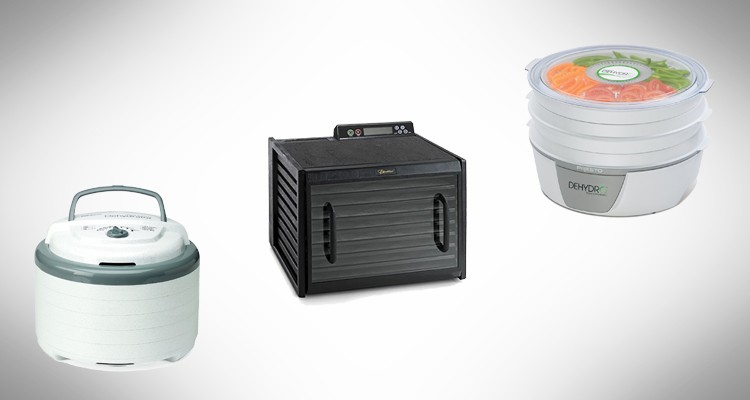Users Manual Open Country Jerky Maker Dehydrator
- Open Country Food Dehydrator Recipes
- Open Country Food Dehydrator
- Best Dehydrator For Jerky
- Open Country Dehydrator Instruction Ma…
- Open Country Gardenmaster Dehydrator …
This dehydrator and home jerky maker dries food quickly and evenly with superior results. All new, 350 Watt, fixed temperature, top down power head is perfect for the beginner or an experienced jerky maker! Makes great tasting beef jerky or venison jerky! With 7 trays you get over 7 square feet of drying space. Makes up to 7 lbs.
Open Country Food Dehydrator Recipes
-7-
-14-
SET UP
- Aug 08, 2013 This is a decent economical dehydrator, and it is a good way to get into dehydrating food. Like most stack able dehydrators you will need to rotate trays, but the Open Country dehydrator does a better job than most of distributing the heat. At the time of writing this model was on sale on Amazon, and you can go here to see if it is still on.
- Jan 12, 2017 Home › Forums › 'Zebra' Adidas Yeezy Boost 350 V2 Restock Will Reportedly Be More Available This Time › Open country food dehydrator and jerky maker manual Tagged: and, country, dehydrator, food, jerky, maker, manual, open 0 replies, 1 voice Last updated by ixxtcaxarl 4 months, 1 week ago Viewing 1 post (of 1 total) Author.
1. Make sure the
Power and Light Switches
are both set to “OFF.”

2. Plug the
Dehydrator into an electrical outlet.
DO NOT use extension cords.
3. Set the
Power Switch to “ON.”
4. Fill the
Racks with food or other items to be dried.
5. Load the
Racks in the Dehydrator. Push each Rack in until it stops.
IMPORTANT: There are three notched Racks. Place these Racks (with the notch
to the back) on the top three
Rack Supports. The notches prevent the Racks
from touching the
Temperature Sensor on the back inside wall near the top. Any
contact between these parts may cause false temperature readings and/or cycle
irregularities.
6. Close the
Door, firmly press on the Door to ensure a good seal.
..PROCEED TO “PROGRAMMING”
BEEF: Choose Flank, Round or Sirloin Tip cuts, as they are the best beef cuts for
making jerky.
WILD GAME: Venison makes excellent jerky because it does not contain marbleized
fat. Flank or Round Cuts work best. Bear and Elk meat also make very good jerky.
POULTRY: Whether making chicken or turkey jerky, it is important that the meat
be cooked heated to an internal temperature of 165
o
F (74
o
C) before dehydrating to
kill disease-causing bacteria.
FISH: Drying fish into jerky requires a lot of attention. It must be cleaned and de-
boned properly and rinsed thoroughly to ensure that all the blood is washed away.
Steam or bake the fish at 200
o
F (93
o
C) until flaky before dehydrating.
MAKING JERKY
Meat should be as lean as possible. Using lean meat will help the meat dry faster and
aid in cleanup by decreasing fat drippings. Ground meat should be 80% to 90% lean.
Ground turkey, venison, buffalo and elk are other excellent choices for Jerky.
Jerky seasonings are available for all tastes, or you can get creative and make your
own. Whenever you make Jerky, you should cure the mixture with cure (sodium
nitrite). The cure is used to help prevent botulism during drying at low temperatures.
Follow the manufacturer’s directions on the cure packet.
Keep raw meats and their juices away from other foods. Marinate meats in the
refrigerator. Do not leave meats unrefrigerated. Prevent cross-contamination by
storing dried jerky away from raw meat. ALWAYS wash hands thoroughly with soap
and water before and after working with meat products. Use clean equipment and

utensils.
Keep meat and poultry refrigerated at 40°F (4.4°C) or slightly below; use or freeze
ground beef and poultry within 2 days; whole red meats, within 3 to 5 days. Defrost
frozen meat in the refrigerator, not on the kitchen counter.
Special considerations must be made when using venison or other wild game, since
it can become heavily contaminated during field dressing. Venison is often held at
temperatures that could potentially allow bacteria to grow, such as when it is being
transported. Refer to the USDA website for further information on food safety. (www.
usda.gov or www.fsis.usda.gov/fact_sheets/index.asp)
When using a
Dehydrator, check the temperature of the Dehydrator with a dial
thermometer before drying jerky. The minimum recommended temperature for drying
meats is 130°F (54°C). Temperatures below 130°F (54°C) are not recommended.
IMPORTANT: Before placing the meat in a Dehydrator, it is highly recommended
to heat the meat to 160°F (71°C) BEFORE the dehydrating process. This step
assures that any bacteria present will be destroyed by wet heat. After heating to
Disappointed by troytec, pass4sure, hotcerts, transcenders, selftestsoftware and all other test engine simulators and E20-830 exam preparations? CertMagic provides a E20- 830 exam material including guides, preparation labs, audio guides, questions and answers. Original bernina 830 manual free download. CertMagic provides a unique range of E20-830 exam products ranging from E20-830 Exam Materials, Study materials, technical training, training manuals, test papers, CertMagic exam Questions, E20-830 Study Guides, study Questions, Practice Exams, study Tests, Certification training Study Notes.
160°F (71°C), maintaining a
Open Country Food Dehydrator
constant
Best Dehydrator For Jerky
Dehydrator temperature of 130-140°F (54-
60°C) during the drying process is important because:
1.) the process must be fast enough to dry food before it spoils; and
2.) it must remove enough water so that microorganisms are unable to grow.